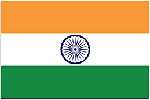Making parks and beaches accessible for differently-abled persons in India
Description
The design of parks and open spaces is important because design influences the activities that can occur in a park and contributes to how fun, safe, and comfortable a park feels for users. <br />
In India, According to NBC (National Building Code), it is mandatory for all the airports and railway stations to provide accessibility to the disabled but, there is no mandating related to accessibility regarding public places. This particular project acts as a platform to address the accessibility issues of parks and beaches in the state, by lobbying with the government departments to include specific features that make it easier for people with disabilities, senior citizens and families use public spaces. It also built capacities of administrations, municipalities and regions in decision making for future investments in accessibility.
1. To build capacity of local governments and department of tourism to adopt and implement public space accessibility measures for persons with disabilities.<br />
2. To provide support to District Tourism Promotion Council (DTPC) and Urban Local Body, to review and update policies to ensure consideration of people with disabilities.
The Department of Tourism has allocated funds upon the Detailed Project Report (DPR) submitted by the District Tourism Promotion Council (DTPC) of respective cities to implement barrier-free projects at parks and beaches. ESAF provided technical support to DTPC, starting from DPR preparation till the implementation stage, making sure inclusive designs were used in all the projects.
Kerala State Nirmithi Kendra (KESNIK), Department of Harbor Engineering, Kerala State Industrial Enterprise (KSIE), FACT (Fertilisers and Chemicals Travancore Ltd.) and RCF (Rashtriya Chemicals and Fertilizers Limited) were the government empanelled organizations responsible for barrier-free project implementation. The construction of all the completed phases were done in consultation with ESAF and the project is still on.
2. The District Tourism Promotion Council (DTPC), Thrissur introduced a Site Guide in Braille at 4 major public space destinations in the district, implementing the suggestion given by ESAF to help the visually impaired identify various facilities without any difficulty. The Braille guide will be replicated at all major beach destinations in the State.
3. The District Tourism Promotion Council (DTPC) included inclusive infrastructure in the district level master plan for developing all the beaches in one of the districts in Kerala
4. District Tourism Promotion Council (DTPC) adopted inclusive design prepared by ESAF through UN Habitat Global Public Space Programme, to develop public spaces in the district. First of its kind in Kerala, beach was redesigned as disabled friendly.
5. Nagpur Municipal Corporation and Nagpur Improvement Trust, the two authorities in charge for public spaces in Nagpur, India in principle agreed to develop accessible and barrier free parks in the city since 2013. Four parks are designed and every park that undergoes maintenance is redesigned on the principles of universal design.
It’s an undeniable fact that preserving public access is a constant struggle that requires continued defence and maintenance. Policy restrictions, physical barriers, economic limitations, coastal development and modifications were the major challenges faced by the District Tourism Promotion Council (DTPC) and local governments while implementing projects to ensure infrastructure accessibility at parks and beaches.
It was because of the firm support of Local Self Government Departments (LSGD), Urban Local Governments and Department of Tourism, that this project could make a state level impact in policies and infrastructures.
Recommendations given in the research studies on beaches and parks (https://drive.google.com/file/d/1LS1kQUg9qeEvkRaD_efXItdYE9y8Wi6H/view?…) conducted by ESAF were included in the district level master plan of District Tourism Promotion Council and Urban Local Governments (ULB).
One of the biggest impediments for the disabled population in India is lack of proper infrastructure in public places. Many attempts to make public areas inclusive for the disabled have been successful, but we have a long way to go. <br />
This particular project strives for this cause, by liaising with Government of India to design inclusive Parks and Beaches in the States of our outreach, thus, reduce dependency of the disabled and to rule out discrimination against them.
Deliverables & Timeline
Resources mobilized
Partnership Progress
| Name | Description |
|---|
Feedback
Action Network


Timeline
Entity
SDGs
Region
- Asia and Pacific
Geographical coverage
Website/More information
Countries

Contact Information
Manju George, Program Manager
